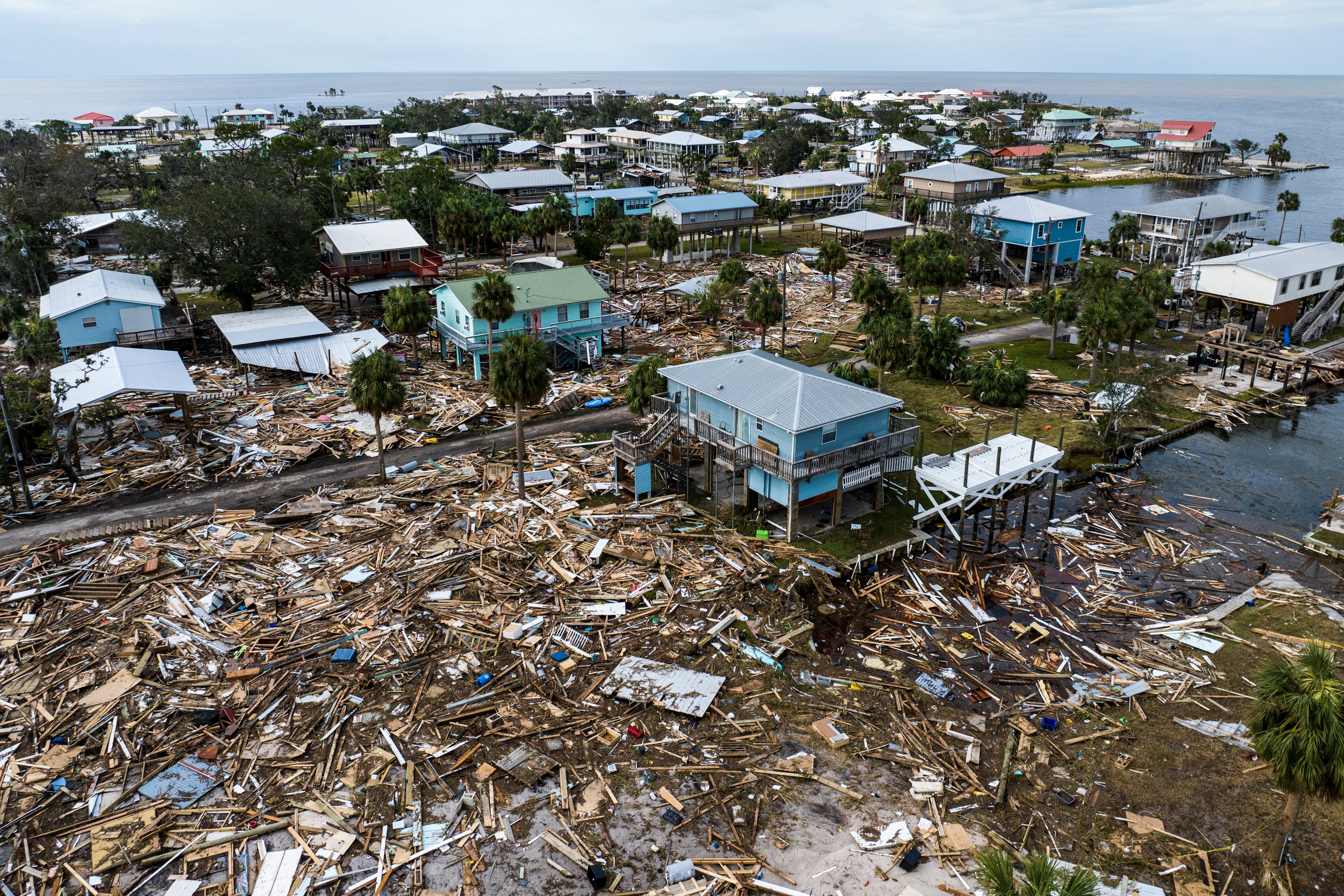Whipping winds are intensifying natural disasters fueled by climate change, stoking raging California wildfires and supercharging major Atlantic hurricanes.
With destructive force, they have the ability to tear off roofs, flatten neighborhoods, and rip trees from the soil, leaving a barren environment in their wake. In the last few weeks, they’ve helped to set Southern California on fire, along with the effects of climate change on the arid region.
“There are a lot of people that believe that climate change is happening and real, but not many people believe that they are actually currently experiencing climate change themselves personally. But, they are,” Daniel Gilford, a meteorologist and atmospheric scientist with Climate Central, told The Independent on Friday.
Climate change is creating conditions ripe for fire growth in areas affected by the winds. Warmer temperatures caused by climate change and atmospheric warming fuel droughts - notably, Southern California hasn’t seen rain for months - that dry out fuels like grasses. As the climate warms, more water evaporates from the ground and vegetation.
And, wildfire is also driven by hydroclimate whiplash and volatility: rapid swings between unusually wet and dry periods. Warmer temperatures can also result in more rain and heavier precipitation events, like the atmospheric river storms that have slammed the Golden State over the last couple of years. The precipitation allows for intense growth of grasses that will die out.
Still, it remains hard to say whether the Santa Ana winds are becoming more or less frequent due to climate change - it may even decrease them.
“The data [is] unclear, I would say, in terms of how climate change might affect Santa Ana winds and those strong, sort of accelerating downslope winds toward the ocean that can really promote that extensive wildfire spread. And, maybe serve as a start to, if you’re knocking down powerlines, infrastructure, things like that, that can ... create those sparks that start a fire,” Andrew Winters, assistant professor in the Department of Atmospheric and Oceanic Sciences at Colorado University Boulder, explained.
When a fire is lit, winds can serve as a blow torch, helping it quickly spread. Two of California’s largest wildfires this month were driven by hurricane-force winds gusting up to 100 mph. Videos showed 70-to-90 mph winds blowing a “blizzard” of embers across front yards in Altadena and through palm trees, setting them ablaze.
Winds that strong can turn a bad situation into a nightmare, grounding firefighting aircraft when they blow over 40 mph, according to Cal Fire Incident Commander Gerry Magaña. This month wasn’t the first time the winds have had that destructive force in Los Angeles County, and it surely won’t be the last. The Santa Ana winds, cool and dry winds blowing from the desert out to the Pacific Ocean, have been a part of the ecosystem for centuries.
Winters pointed out that, due to warming from climate change, the position of the upper level jet stream in the northern hemisphere is expected to shift north. The jet stream is a fast-moving ribbon of wind within the atmosphere that can significantly influence weather patterns. The jet stream moving north would focus the potential for precipitation to impact the Pacific Northwest and leave California with the expectation of more dry days in the future.
“And, with those drying conditions, it’s almost like you’re stacking the deck for a catastrophic fire to develop,” he said. “So, kind of the footprint from climate change potentially on what we’re seeing in California is really in the context of how climate change can alter the large-scale atmospheric circulation and wind patterns in a way that favors these prolonged drought periods that can contribute to the development of favorable sort of fuel conditions ... that can lead to rapid wildfire growth.”
While the effect of climate change on the Santa Anas remains up in the air, the impact on hurricanes is clearer.

Gilford led research on how climate change powered up hurricanes churning in the Atlantic Ocean last year, more than 2,500 miles away. He found that climate change increased the maximum wind speeds for every Atlantic hurricane last year, raising their highest sustained wind speeds by between nine and 28 mph. The increase helped move seven hurricanes to a higher category on the classifying Saffir-Simpson Hurricane Scale, and strengthened tropical storms into hurricanes.
Record ocean warmth during the hurricane season due to climate change made major Hurricanes Helene and Milton stronger, adding 16 to 24 mph respectively, according to the study from the non-profit Climate Central. Storms like Beryl and Raphael formed in ocean waters that were made 1.3 or 1.4 degrees Celsius warmer than they would have been 100 years ago, Gilford said.
“The storm has this speed limit at which it can spin based on its environmental conditions. And, the warmer the sea surface temperatures, the faster a hurricane can spin,” he noted, adding that hurricanes care about sea surface temperatures like cars care about fuel sources.
Scientists have yet to fully capture how the atmosphere could be changing and affecting these hurricanes, according to Gilford. But, there will definitely be more intense storms as the planet continues to get hotter. Last year was the hottest year on record.
“We know that climate change is happening all around us. It’s influencing our lives right now. It’s affecting the storms that we’re living through, the terrible disasters that we see on TV, or the terrible heat we might experience outside for a given day,” he explained. “Climate change is living.”







